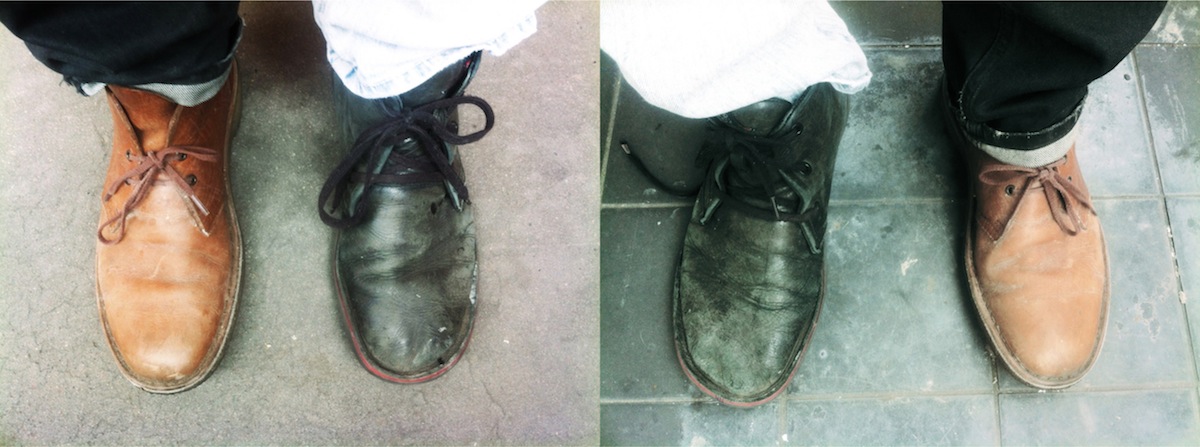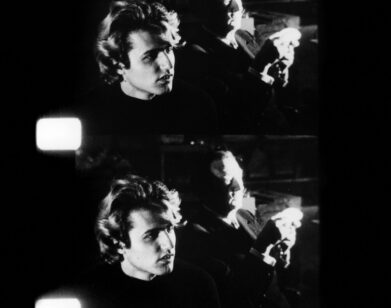David Birkin and JeremyHutchison on Trying and Failing
For many artists, failure—rejection letters, scathing reviews, misread work—is inherent to the creative process. Some choose to demolish their less-than-perfect works: Monet took a box-cutter to a group of his paintings; Rauschenberg drowned his sculptures in the Arno River. But David Birkin and Jeremy Hutchison have chosen to take the opposite tack. For Some Fifty Miles of Concrete Pavement—which opens today at Art(Amalgamated)—the artists and friends documented their failed attempts to bridge the geographical and ideological chasm that divided them.
With the intent of meeting in the middle, Birkin set out on foot across the Mojave Desert, while Hutchison trekked across London from his studio. Through sculpture, video, sound, and photography, Some Fifty Miles documents a complex study in scale and perspective, while challenging our notions of what constitutes “successful” art.
ERICA BELLMAN: When and how did you two hatch the idea for Some Fifty Miles of Concrete Pavement?
DAVID BIRKIN: We began with a speech Eisenhower gave early into his presidency: The Chance for Peace. The speech details what each item of military hardware could buy in terms of social infrastructure: how many schools or hospitals could be built for the price of, say, one rocket or a single warship.
We became interested in this idea of equivalence and how far it could be pushed. There’s a moment in the speech where he proposes “some fifty miles of concrete pavement” as a budgetary equivalent to one modern heavy bomber. In the ’50s… it must have sounded like a real Utopian project. But to the postmodern ear, it has a more dystopian and uncanny ring to it.
BELLMAN: What were some of the necessary adjustments you made to your individual creative processes in order to collaboratively produce the work?
JEREMY HUTCHISON: We kept tripping over each other in our attempts to communicate: across Skype, across the Atlantic… across divergent personal, ideological or aesthetic positions. The more we talked, the further we drifted apart. In the middle of one Skype chat, we realized the problem was in fact the solution: the work is about the impossibility that two human beings can ever truly bridge their differences—
BIRKIN: —That two friends can ever truly meet. This became the starting point for our performance. Jeremy would walk 25 miles southwest from his studio in east London, and David would walk 25 miles northeast from the Mojave Desert… And we would fail to meet in the middle. It was [a] naively heroic gesture that was doomed from the outset, but which recognized a sense of camaraderie in absurdity and failure.
BELLMAN: Which artists, contemporary and past, do you feel this piece is in dialogue with?
HUTCHISON: We did a lot of research into the land artists: de Maria, Smithson, Judd. We became interested in their relationships to vastness, and in their vain attempts to reconcile human existence with the infinitude of space. In [the] ’70s, perhaps these attempts seemed male and heroic. But the Internet has shifted our relationship to space. Space has become phenomenological: it’s less a physical reality and more an experience within consciousness. When you send an email, your Mac fabricates the distance with an audible whoosh…
BELLMAN: Do you think certain elements will be “lost in translation,” since the process of creating the work was so deeply personal and driven by your relationship?
HUTCHISON: To a large extent, this project is about slippage. Good things happen when you can’t tell what someone’s talking about. So if stuff drops out between us and the audience—that’s fine. It’s where interesting things happen.
SOME FIFTY MILES OF CONCRETE PAVEMENT WILL BE ON VIEW AT ART(AMALGAMATED) THROUGH JUNE 22.







